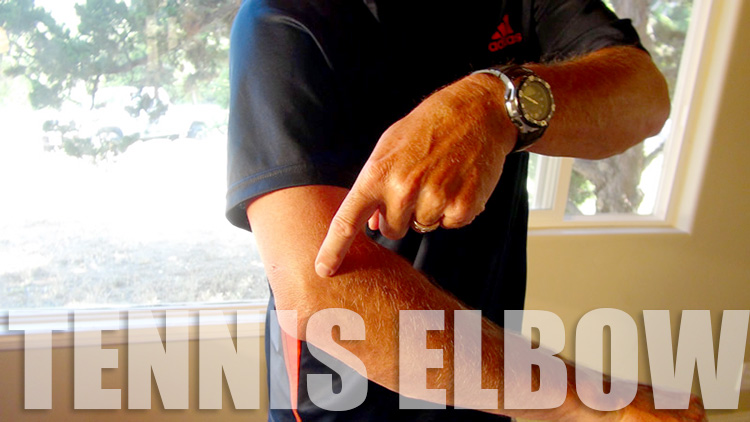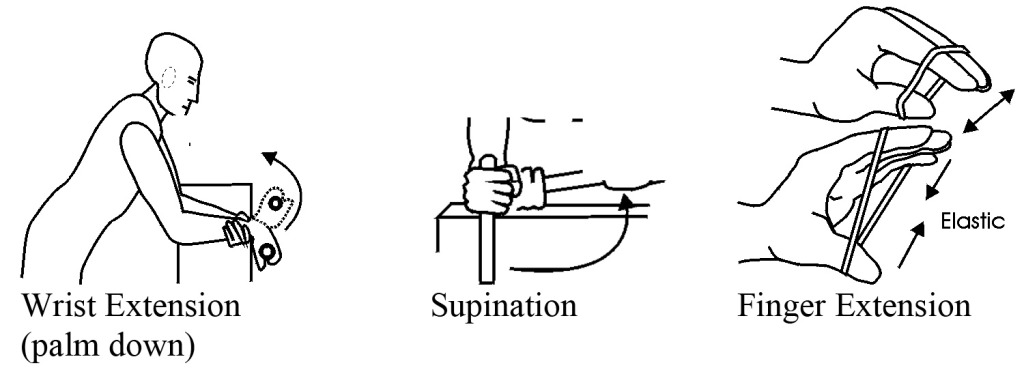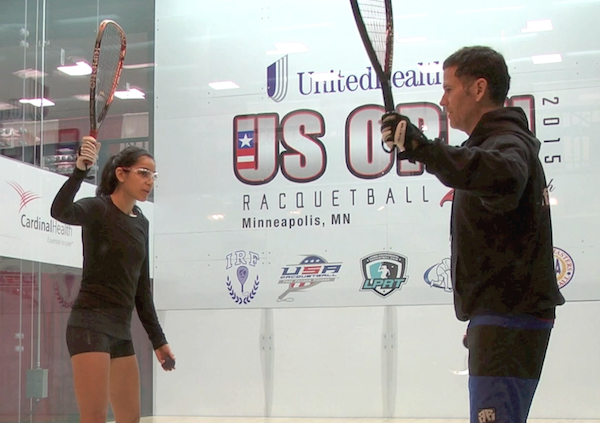
Tennis elbow (also known as lateral epicondylitis) is one of the most common injuries of the elbow that happens in sports. Let’s start off by reviewing what is tennis elbow and a few signs/symptoms.
Tennis elbow generally is caused by repetitive extension of the wrist. This repetition causes irritation of the extensor muscle inserted on the lateral epicondyle of the elbow. In my personal experience, muscle imbalance also plays a huge role in this equation. The wrist flexors and pronators are much stronger and used more frequently than the extensors and supinators associated with tennis elbow. So when the flexors and pronators are used more frequently (i.e. – most people prefer their forehand), the explosive/dynamic flexion/pronation of the wrist pulls on the much weaker extensors/supinators, thus causing severe trauma due to eccentric loading (decelerating of the wrist during a forehand), which is much greater than concentric loading (extension of the wrist during a backhand). This eccentric loading coupled with repetitive extension during a backhand combine to cause the injury. Let me explain it another way: a very similar thing happens when a baseball player throws a ball. The much stronger anterior musculature (internal rotators of the shoulder, chest, anterior deltoid, abs, obliques, etc) explosively accelerates the arm to throw the ball. After releasing the ball, the posterior musculature (external rotators, posterior deltoid, rhomboids, lats, low back muscles, etc) have to contract dynamically to slow/stop the arm and body. Much more stress is put on the posterior musculature just like the extensors/supinators of the wrist when hitting a forehand.
The biggest sign of tennis elbow is an aching pain over the lateral elbow region, usually during and after playing. Tenderness to touch can be another symptom. As the injury worsens, weakness in the wrist and hand can occur.
Treatment of tennis elbow begins with the basic RICE principle: Rest, Ice, Compression, Elevation. This should be done daily from the initial start of the injury. After a few days, stretching and strengthening exercises should be started. Wrist flexor, pronator, and elbow flexor stretches (seen below) should be done 2-3 times, holding for approx 20-30 seconds. These can be done daily, multiple times throughout the day, especially after playing (ice, compression, and elevation should also continue to be a post-playing regimen). Due to imbalances naturally occurring, it is important to not perform wrist extensor or supinator stretches.
For the strengthening part, we want to strengthen the wrist extensors, supinators, and finger extensors (see below). These exercises should be performed 2-3 days per week, 2-3 sets of 15 reps, beginning with very-light or no weight. As symptoms decrease and the injury begins to feel better, these can be progressed to 2-3 sets of 8-10 reps, using heavier weight and trying to lift the weight faster (due to the sport-specific, explosive/dynamic movements of racquetball). It is very important to utilize full range of motion, otherwise weaknesses can still occur.
In addition to these stretching and strengthening exercises, other popular trends, options, and recommendations you can try may include: wearing a brace, functional taping, and taking lessons from a certified instructor for ensuring proper technique.
Remember, this is only my opinion and how I would treat tennis elbow based off of general information. More specific treatment options may vary in a formal setting and after a full evaluation of the injury. If signs/symptoms continue to occur, I definitely recommend consulting with your doctor.
______
Brent Huff, of St. Charles, IL, holds a Masters degree in Sports Medicine from the United States Sports Academy and possesses 14 years’ experience as a Certified Athletic Trainer (ATC) with NATA (National Athletic Trainers Association). He also holds certifications as a Certified Strength and Conditioning Specialist (CSCS) and Tactical Strength and Conditioning Facilitator (TSAC-F) with the NSCA (National Strength and Conditioning Association). He is also certified as a Holistic Lifestyle Coach (HLC1) through the CHEK Institute.
A Wilson- and Rollout Racquetball-sponsored player with 30+ years playing experience.
Brent is the Team Athletic Trainer for the US National Racquetball Team. He provides everything from prevention to assessment to emergency care. Rehab services for athletes and on-site coverage for athletic events are part of his repertoire as well. His experience encompasses everything from little kids to professional sports, including racquetball and the LA Dodgers.







A remedial massage can help you prevent tennis elbow by warming up the area with different techniques before you do intense activity that might put a strain on that part of your body.
Medial epicondylitis has plagued me for over a year now – less and less now but still it’s here – what’s up ?